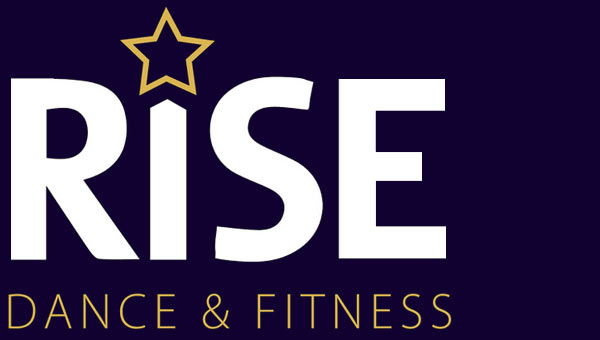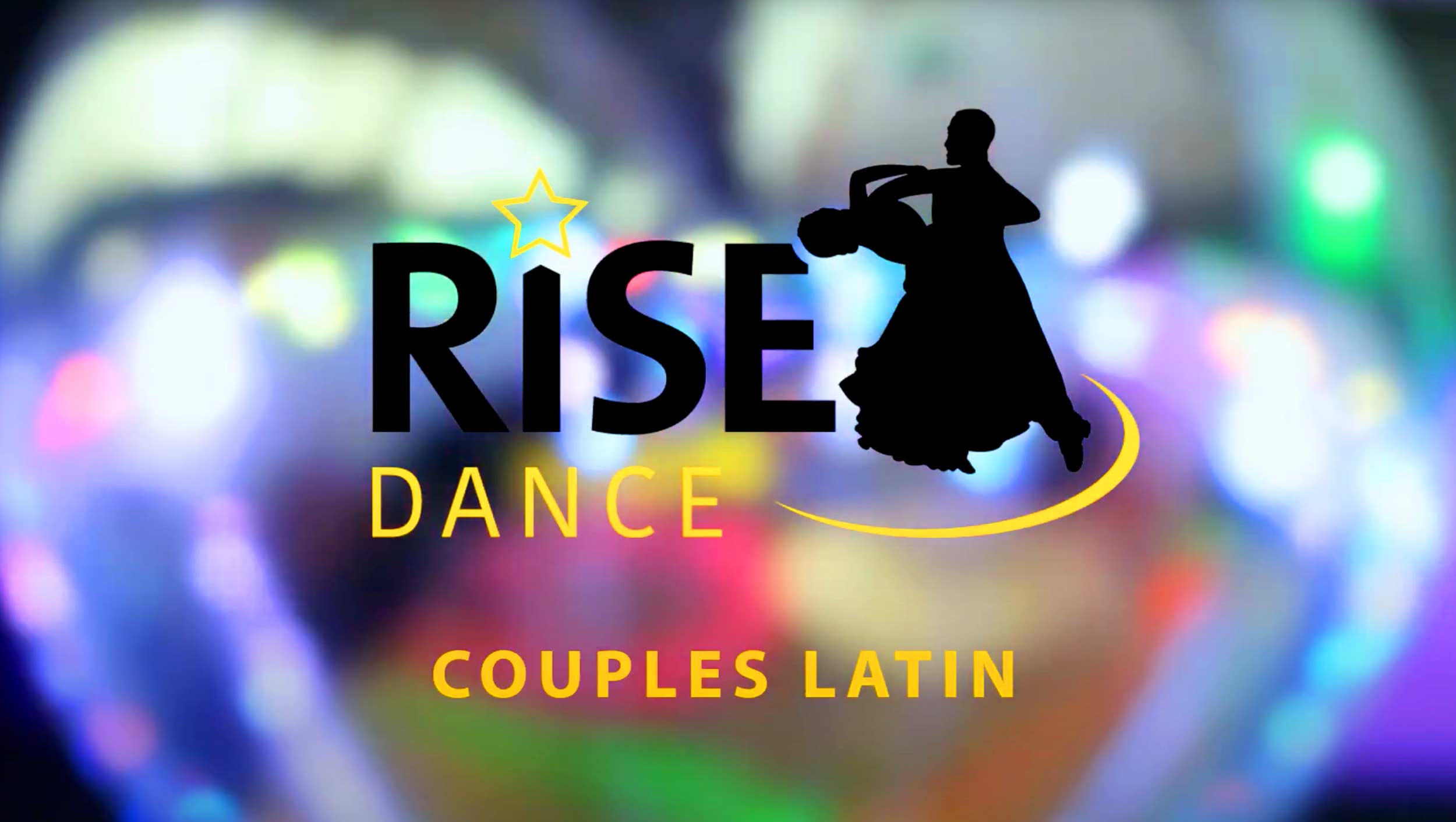Learn to master Latin dancing with our Partner Latin lessons in Leeds
Latin Dance Guide
We are sure you will have come across examples of Latin dancing, either in person or on TV. Recently the popularity of Latin dancing has grown more than ever due to TV shows such as Strictly Come Dancing and Dancing with the Stars. This exciting and ever evolving dance style has taken the nation by storm and its popularity shows no sign of stopping!
In this guide, we will share with you everything you need to know about Latin dancing and how RISE Dance can set you on course for Latin mastery!
What is Latin DancE?
The genre of Latin dancing has been named based on its origination from South America which is commonly referred to as Latin America. It is a partner dance style that is known both for competitive dancing, but which can also be enjoyed socially.
There are five different styles within the genre of Latin dancing which are wide ranging. They are the Cha-Cha, Samba, Rumba, Paso Doble and Jive. Here we will describe in more detail the different styles and help you get to know them better.



Cha-Cha-Cha
The Cha-Cha-Cha, usually abbreviated to “Cha-Cha” is normally one of the first Latin dances you will encounter when starting Latin classes. The traditional Cha-Cha was founded in Cuba, and this is considered the birthplace of what we now recognise as our modern version. It was brought over to America and then England, here it underwent standardisation by the Latin American specialist and pioneer Walter Laird in London.
Cha-Cha is known for its cheeky style, where close movements, involving a partner as well as quick hip actions produces a lively feel. Cha-Cha is also recognised for its flair and impact, where the speed of the music coupled with basic technique creates sharp and dynamic movements.
Cha-Cha is a very popular dance as it can easily be danced to modern music, it has a 4/4 time signature which is commonly found in popular music. Social dancers find they can pick up the simple step patterns in this style of dance and are able to get to grips with dancing the Cha-Cha very quickly.
Samba
Samba is known as the party dance of the genre and is historically linked to Rio De Janeiro and the carnivals and festivals held there. Samba is a very rhythmical dance, and this is due to the other dance and musical styles it has been influenced by. Rhythms from Salsa and Mambo along with music from Urbano Carioca in addition to some lesser-known influences blend together to produce the unique character of the Samba.
Modern Samba has a 2/4 time signature and utilises a subtle bounce action, this is seen in the dancers’ body but is produced in the feet. It forms the basis of the step patterns and figures which dancers can perform in this dance. This dance is enjoyed by many social dancers due to its fun and joyful feel.
Rumba
The Rumba is synonymous with romance and passion, this dance holds a special place for many dancers and as such, it is referred to in the competitive dance world as being the ‘Queen’ of the Latin dances. Rumba originated in the 16th Century in Cuba as a sensual lively dance with influences from Afro-Cuban music. Eventually it made its way to the United States in the early 1920’s following a widespread intrigue in Latin music. The Rumba then took hold in London and later became standardised by Walter Laird in his Latin Technique book around the 1930’s. Today this is the version of Rumba we still know and perform
The Rumba is danced to a slow tempo with a 4/4 time signature, this slow speed helps accentuate the use of both body and hip actions when moving to the beat of the timbales, congas and maracas commonly heard in Rumba music. Rhythms in the music correlate to movements seen and felt within the body as well as settling actions within the hips. Together these produce a sensual and experiential form of dancing popular amongst dancers of all calibres today.
The Rumba being a body dance primarily and given its Cuban heritage (much like the Cha-Cha) is not designed to progress around the floor like a Samba, Paso Doble or Waltz.


Paso Doble
The Paso Doble is the most dramatic and theatrical of all the Latin American dances. The Paso Doble is a portrayal of the Spanish bull fight with the dancers representing the bull and matador. The Paso Doble is set to a 2/4 time signature and its basis is a marching movement, this and the story mentioned above give the Paso Doble its strong, powerful, and dramatic feel.
The traditional music played for Paso Doble is the “Spanish Gypsy” and “Espani Cani” which are directly associated with bull fights of Spain. Paso Doble can be danced to other musical compositions however these pieces are the most commonly used. The three crescendos within these pieces of music are used to depict the build-up and climax of the bull fight.
Additional elements have since been incorporated into the Paso Doble when it was standardised into the format we see today. These elements are the inclusion of the Flamenco and similar Spanish dance styles, they include fast feet movements and hand and arm stylisations.
Also influencing the modern style of the Paso Doble was its initial inclusion by the competitive Ballroom and Latin into the Ballroom repertoire. This led the dance to incorporate close positioning and contact between partners, this is still maintained as part of the style despite it now being included in the Latin dance genre.
Jive
Jive is the lively, fun, and energetic dance of the Latin American genre and is well recognised from the variety of performances seen on Strictly Come Dancing and Dancing with The Stars over the years.
Jive is historically a swing dance however we have seen the modern style developed to include more high energy and fast paced steps. Despite this most dancers enjoy coming back to the basic swing rhythm of Jive. Jive style incorporates Jitterbug, West Coast Swing, Rock’n’roll, Lindy Hop as well as other additional rhythms.
Jive is danced to music with a 4/4 time signature. With a lot of dances being set to a 4/4 time signature it is easy to feel confused about what dance can be performed to which piece of music. Jive is instantly recognisable with classics songs from the likes of Elvis Presley, Jive Bunny, and Cab Calloway. Modern Jive songs are influenced by these classics and have a similar feel when dancing to them.
This dance is a favourite amongst dancers of all ages and abilities and many beginners find the basic step patterns very easy to learn.
How can I get started?
Now that we have gone over the basics of what Latin dancing entails, how can you get involved yourself?
The best way to get started in Latin dancing is to join a beginner’s class. Here at RISE, we have new classes starting regularly which allow all our beginners to start at the same time as each other. As with all our couples’ classes here at RISE Dance, the classes run in 4 weekly blocks. These blocks are designed to run continuously with everyone progressing in ability, together, over time.
The class will cover 8 main Ballroom and Latin dances, including Waltz, Tango, Foxtrot, Quickstep, Cha Cha, Samba, Rumba and Rock n Roll / Jive. You’ll learn basic steps initially which will fit together to form simple routines, and over time the routines will progress in difficulty as your skills increase.
We teach our classes a pace that is suitable for beginners, and which helps build confidence and without judgement of your dancing level or proficiency.
With a beginner’s class you will surprised at how quickly you can take to the floor. You’ll be able to learn a little bit of each style and we are sure you will find your favourite, whilst at the same time enjoying the variety of the music of each dance.
As you advance, or if you are already proficient in Latin dancing, we have the Improver, Intermediate and advanced Ballroom and Latin classes. Here we take you through more advanced technique for the dance styles that you have learned. Our amazing instructors will take you from a novice to a pro through their experience and knowledge in our well laid out classes. As you progress even further, you may want to specialise in a specific style of dance, we regularly hold masterclasses which focus on one style, or you may wish to sign up for private tuition to really boost your dancing proficiency and ability.
What else do i need to know
Once you’re signed up to a class, what do you need to know to prepare for the first session?
First of all, you'll need to wear appropriate clothing and footwear for dancing. Make sure to wear comfortable shoes that fit securely and do not have too much grip. Plimsoles for example are fine to start with. We do not recommend sandals or flip flops as they can easily fall off when dancing. If you decide further down the line that you would like to invest in some dance shoes a member of our team can advise on that. There is no need for formal ballroom shoes at the beginner stage.
The same goes for clothing, choose something you are comfortable in and that you can move freely in, loose clothing or sportswear is ideal.
There is no need to buy anything specific for the class, and no need for formal ballroom attire. Lots of couples enjoy getting dressed up for our social events, but specific dancewear is never necessary at a social level.

